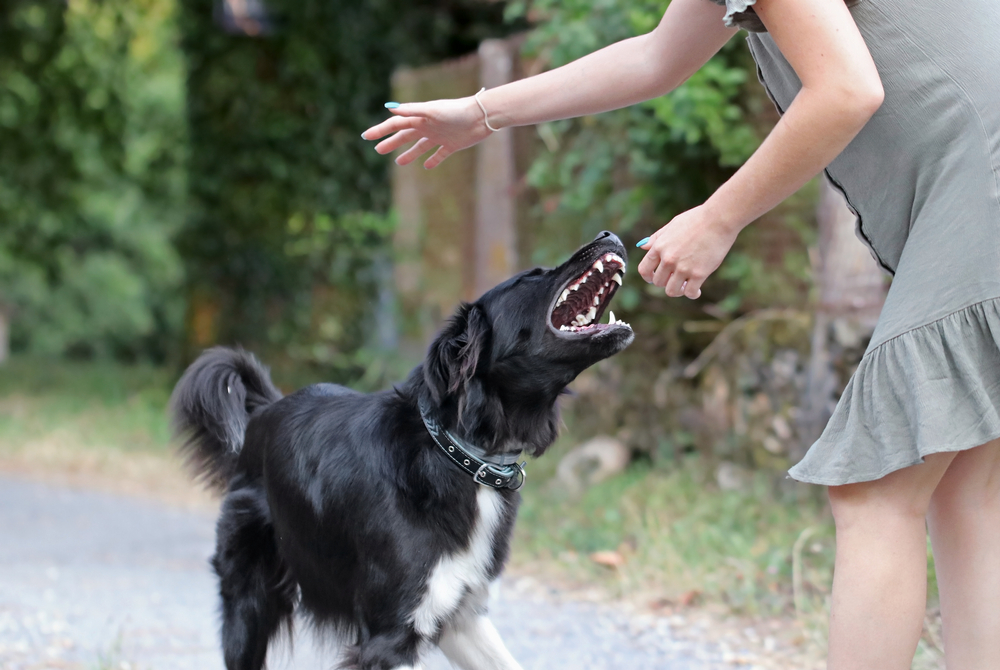Animals can be quite unpredictable creatures, even if our true-blue four-legged friends. In fact, the most diligent dog owners could find themselves in some scary situations of having their dog bitten by another dog.
According to Molly Sumridge, a certified professional dog trainer and behavioral consultant, dog bite incidents are responsible for no less than 80% of her business at Kindred Companions LLC, a well-established dog-training company she founded in Frenchtown, New Jersey.
When your dog sustains a dog bite, there’s really no one-size-fits-all solution. But keeping a cool head in the event of a dog bite, knowing what you’re looking for when you assess an injury, and having an idea of what to do next can definitely show that the wounded dog gets the right amount of care, and makes for a speedy recovery.

Immediate dog bite aftermath
Dr. Morgan Callahan, VMD at the Center for Animal Referral and Emergency Services (CARES), a 24-hour emergency veterinary care hospital in Langhorne, Pennsylvania, explained that if you see a dog bite your pup, the first thing you need to do is to remove your dog from that situation.
Then, if your dog is capable of walking, allow him to do so. This can calm him and will also give you a chance to observe the dog’s gait and look for bleeding.
If your dog can’t walk, you should carry him. However, Dr. Callahan declared that even the gentlest dogs could bite you when they’re hurt and injured, so you need to be cautious. It’s also very important to gather as much information as you can.
“If the owner is there, try to ask if the dog is up-to-date on his rabies vaccine,” as Dr. Callahan advised. “Also, collect the needed contact information from the pet owner whenever you get the chance.”
Assessing the seriousness of a dog bite
The severity of a dog bite can greatly differ on a variety of factors. As a general rule, a bite can encompass anything from a tiny nick to a wide series of wounds that require veterinary attention. Dr. Stacey Rebello, DVM, MS at NorthStar VETS, a veterinary emergency trauma and specialty center in Robbinsville, New Jersey, suggested that dog owners should remember to exercise more caution when their dog suffers an injury or attack.
Dr. Callahan also explained that back in veterinary school, they were taught that the puncture you spot outside the skin is the “tip of the iceberg” in a bite wound injury. This is mainly because a bite can be both crushing and a shearing injury.
Oftentimes, tissues can be damaged under the puncture, and a pocket is made. There could be bleeding or nerve damage under the skin that simply cannot be seen through the puncture. The tooth also carries bacteria with it into the pocket, setting up the proper environment for an abscess to form.
Some areas in a dog’s body are far more prone to complications than others. Moreover, the location of a bite can represent a huge factor in whether or not medical treatment is needed. “The mouth and nose heal fast. If a dog gets nicked or scratched in that place, there’s nothing to be concerned about. But if the dog gets bit on the legs, the torso, or neck, that’s when you should rush to the vet.” she explained.
Moreover, if the dog is vomiting, acting a bit more lethargic than usual, or has difficulty breathing, it’s definitely an emergency and should be immediately evaluated by a veterinarian.
Dealing with dog bites
If you take your dog to the vet right after a dog bite, here’s what you should expect:
“For smaller bites that don’t imply surgical intervention, we generally perform a serious wound evaluation, clip the surrounding hair, disinfect the region with an antibacterial solution, lavage the wound out with saline, and start administering antibiotics.” She also explained that your veterinarian could decide to prescribe pain medication for dogs, to help it out.
In some cases, far more serious, such as an infected dog bite, the bite treatment requires your dog to be put under anesthesia. “If a puncture or deep pocket is discovered, then the veterinarian might suggest anesthetizing the dog to remove the damaged tissue, then place a drain to allow the dog’s body to get rid of any pooling infection.”
Dr. Callahan explained. “The drain is generally removed in three to five days after the drainage is minimal. Any remaining stitches are then removed 10–14 days later. Even with surgery, dogs can go home the same day with oral antibiotics and some pain medication.”
How to prevent dog bite infections
Preventing infection is mandatory after every serious dog bite. First and foremost, you need to make sure you efficiently administer any dog antibiotics prescribed by the vet. It is also very important to keep your dog from licking or scratching the area.
Whether your vet decides to wrap the wound or not, the best thing to do is to be extra safe and use all the necessary barriers to keep your dog from getting to the site of the wound.
More often than not, the cone of shame can easily prevent a dog from licking and recontaminating the wound. But for pet parents who deeply worry about their dog’s comfort with these cones, there’s a wide variety of options available.
There are soft versions, such as the Comfy Cone E-Collar, that can keep your dog from being able to get to his wound, as well as allow him to maneuver with ease. There’s also the KONG Cloud Collar, which looks like an airplane pillow. It often has a barrier, but it doesn’t interfere with peripheral vision, or with the ability to eat and drink out of a dog bowl.

Return to normal
After a dog attack that ended in a dog bite, getting your dog back to her normal, happy self might require some time. Dr. Laurie Bergman, VMD, a veterinary behaviorist who works for the NorthStar VETS, explained that the very first step is spotting the situation that led to the bite in the first place. “If the bite was from a dog that lives in the same house, you have to figure out what triggered the biting event.”
Dr. Bergman also added that in these cases, the owners should punish the dog that acted out, since it could only make it more anxious and more likely to bite again in the future. Dr. Bergman also explained that owners need to be sure they know and fully understand their dogs.
If they are not happy and relaxed when meeting other dogs, then you really shouldn’t put them in such situations. Dog owners need to learn what a happy and relaxed dog looks like, versus a dog that puts up with a situation.
Ultimately, you have to be prepared to change plans if something doesn’t work. For instance, if you plan to go to the dog park and you see there are plenty of dogs there, but yours only gets along with the other two or three, you should go for a nice long leash walk instead.
Dogs who suffer bites will often exhibit behavioral changes. In fact, it’s not just about physical care that’s necessary with a bite, but more so behavioral care and management are mandatory, too.
If you found this article useful, we also recommend checking: Pet Afterlife Visits: 10 Signs Your Beloved Pooch Is Still Around












